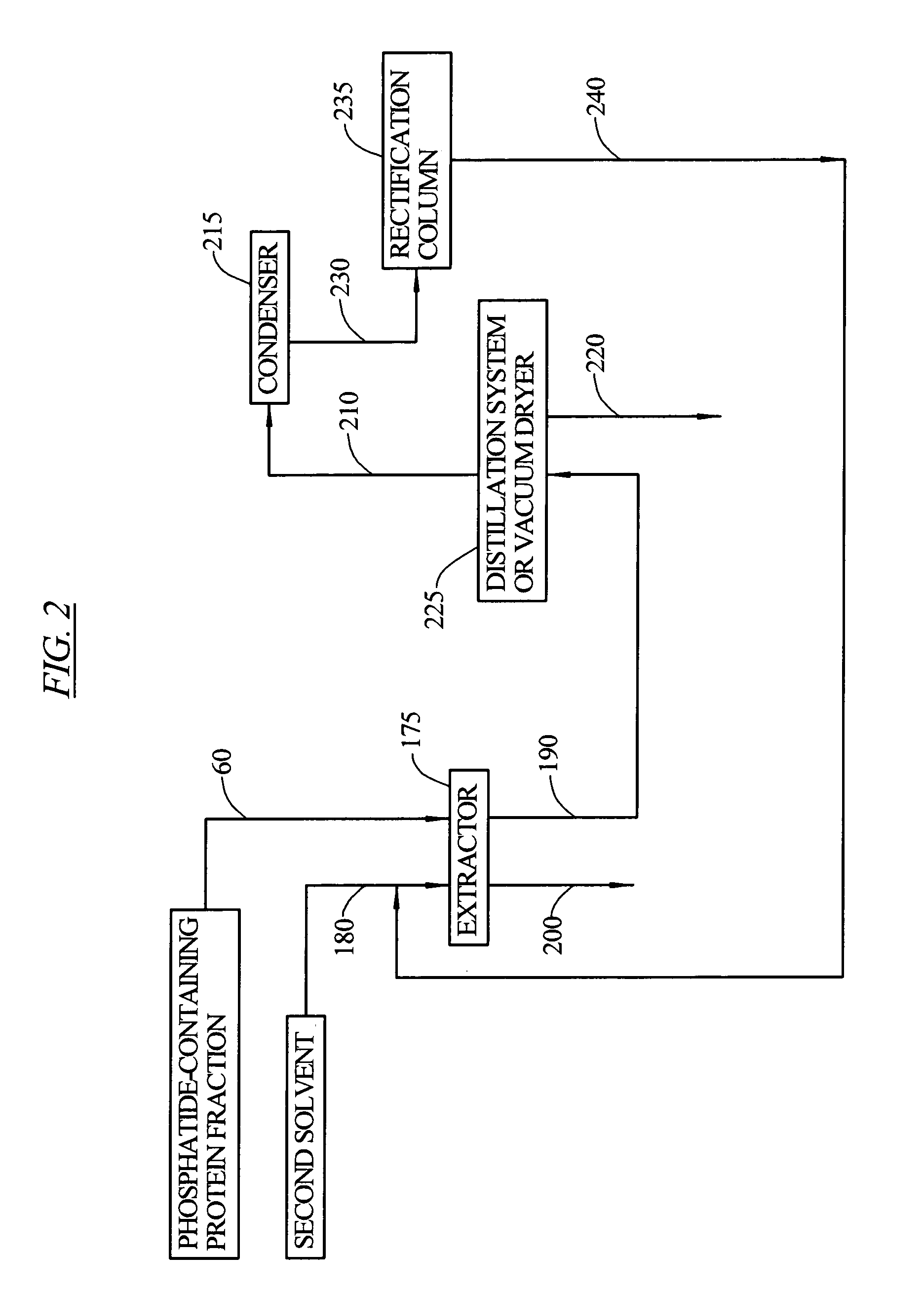Vegetable oil extraction methods
a technology of vegetable oil and extraction method, which is applied in the field of vegetable oil extraction method, can solve the problems of limiting the use of vegetable oil in human food, poor growth, and loss of appeti
- Summary
- Abstract
- Description
- Claims
- Application Information
AI Technical Summary
Benefits of technology
Problems solved by technology
Method used
Image
Examples
example 1
[0089]A 3 percent by weight aqueous citric acid solution was prepared by combining 81.7 grams of citric acid with 6 pounds of water. The aqueous citric acid solution was heated to 200° F. and circulated through 1.5 pounds of flaked soybeans for 15 minutes. The extraction yielded 1184 grams of an aqueous extract and 142 grams of oil-rich extracted solids. Upon analysis, the aqueous extract was found to contain a total of 177.2 ppm isoflavones, indicating a greater than 96 percent recovery of the 182.9 ppm isoflavones initially present in the flaked soybeans.
example 2
[0090]The oil-rich extracted solids of Example 1 were extracted with 2 pounds of acetone heated to 120° F. and circulated for 15 minutes. The resulting phosphatide-containing protein concentrate contained 50.57 weight percent protein, 10.34 weight percent water, and 2148 ppm phosphorus (indicating a content of 6.44 weight percent phosphatides) but was substantially free of raffinose and stachyose. The amino acid content of the phosphatide-containing protein fraction was analyzed and compared to the amino acid content of a protein meal obtained from conventional hexane extraction. The data shown in Table 3 indicate that, compared to conventionally extracted soybean meal, the phosphatide-containing protein fraction contained a greater amount of nearly every amino acid. Moreover, the phosphatide-containing protein fraction met or exceeded nearly every FAO / WHO / UNU-recommended amino acid requirement for adults. Because the phosphatide-containing protein fraction is a lecithinated meal, i...
example 3
[0092]The extraction of Example 2 produced an acetone-oil phase, which upon distillation to vaporize acetone produced soybean oil having the characteristics summarized in column A of Table 4. Compared to conventional hexane-extracted crude soybean oil, which has the characteristics summarized in column B of Table 4, the oil produced by the methods of the invention has a semi-refined quality in that it is extremely low in trace metals and phosphatide content. Filtering the oil through activated carbon produced soybean oil having the characteristics summarized in column C of Table 4. The filtered oil contained essentially no trace metals or phosphatides, and was ready for deodorization without the need for additional refining steps.
[0093]
TABLE 4Soybean OilSoybean Oil ofofHexane-ExtractedExample 3, FilteredComponentExample 3Crude Soybean OilWith Activated CarbonNa (ppm)2.400Mg (ppm)2.490.00Ca (ppm)2.697.00Fe (ppm)01.50Ni (ppm)000Cu (ppm)0.0600.01P (ppm)290.4876.00
PUM
 Login to View More
Login to View More Abstract
Description
Claims
Application Information
 Login to View More
Login to View More - R&D
- Intellectual Property
- Life Sciences
- Materials
- Tech Scout
- Unparalleled Data Quality
- Higher Quality Content
- 60% Fewer Hallucinations
Browse by: Latest US Patents, China's latest patents, Technical Efficacy Thesaurus, Application Domain, Technology Topic, Popular Technical Reports.
© 2025 PatSnap. All rights reserved.Legal|Privacy policy|Modern Slavery Act Transparency Statement|Sitemap|About US| Contact US: help@patsnap.com



